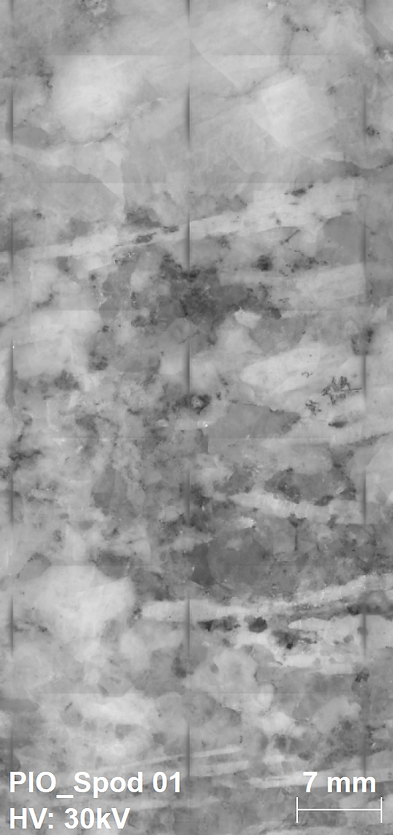
Lithium Exploration.
Micro-XRF technology can be a useful tool for accurately identifying lithium-bearing minerals.
For example
-
Eucryptite
-
Petalite
-
Zinnwaldite
-
Amblygonite
-
Spodumene
It is also useful for determining the textures and chemical zoning of these minerals on a macro- and micro-scale.
Although the micro-XRF cannot measure lithium, the AMICS software can identify the minerals based on their other elemental components enabling mineral maps to be created, showcasing any textures and chemical zoning that may be present in each mineral phase.
The use of the Bruker M4 TORNADO can enable specific questions about the economic minerals in the deposit to be answered in a cost-effective and time-efficient manner.
Hover over image
.png)
Figure 1a: Mosaic: Spodumene from Sinclair Caesium Mine.
Courtesy of Portable Spectral Services and Pioneer Resources Limited.
.png)
Figure 1b: Al, Fe and K Elemental Map: Spodumene from Sinclair Caesium Mine.
Courtesy of Portable Spectral Services and Pioneer Resources Limited.
.png)
Figure 1a: Mosaic: Spodumene from Sinclair Caesium Mine.
Courtesy of Portable Spectral Services and Pioneer Resources Limited.
.png)
Figure 1c: Na, Al Si and K Elemental Map: Spodumene from Sinclair Caesium Mine.
Courtesy of Portable Spectral Services and Pioneer Resources Limited.
.png)